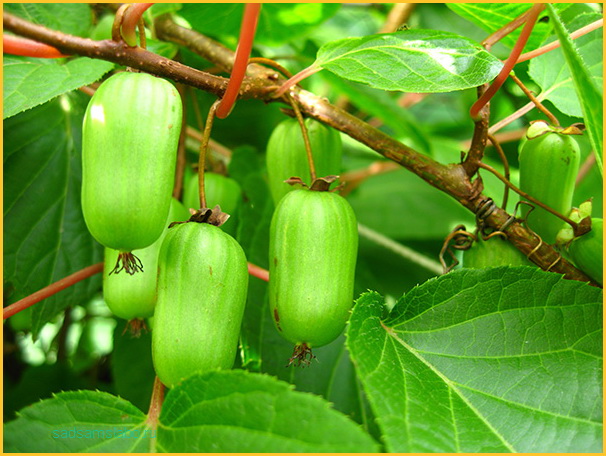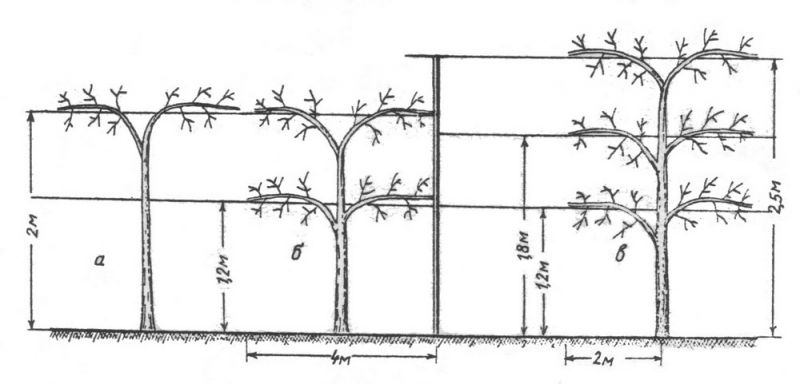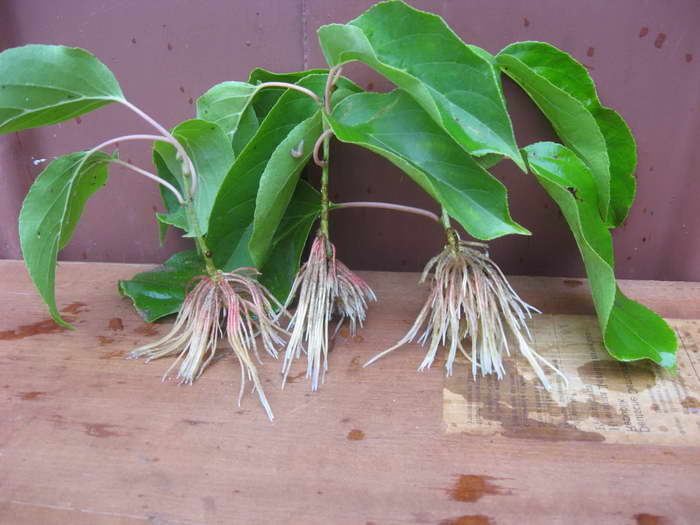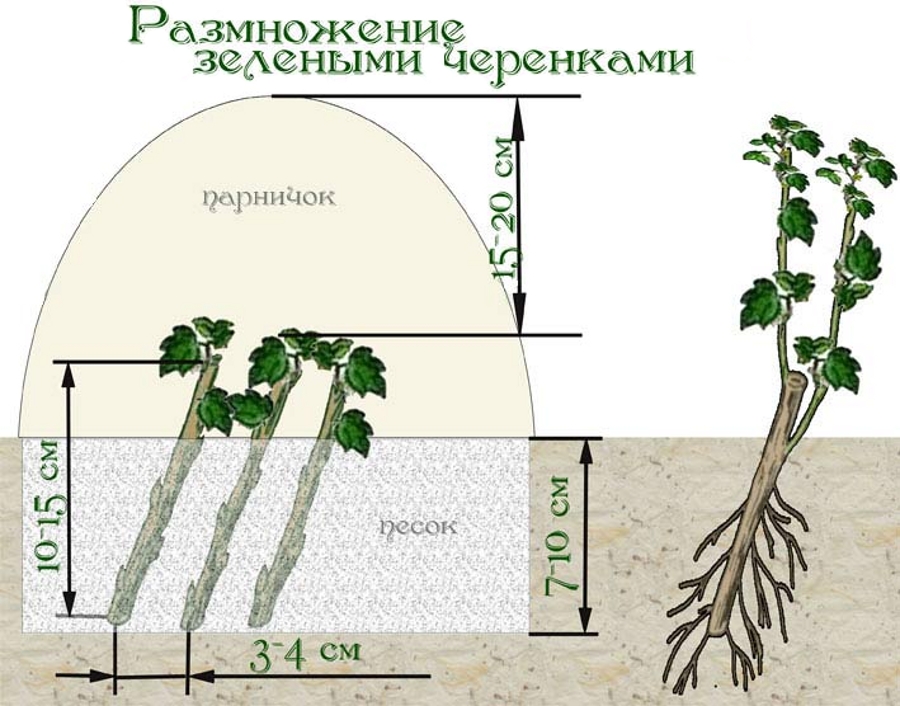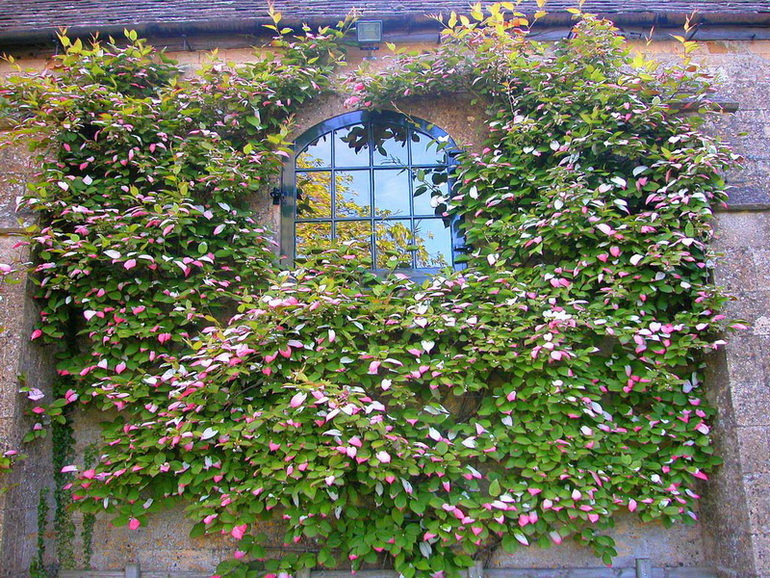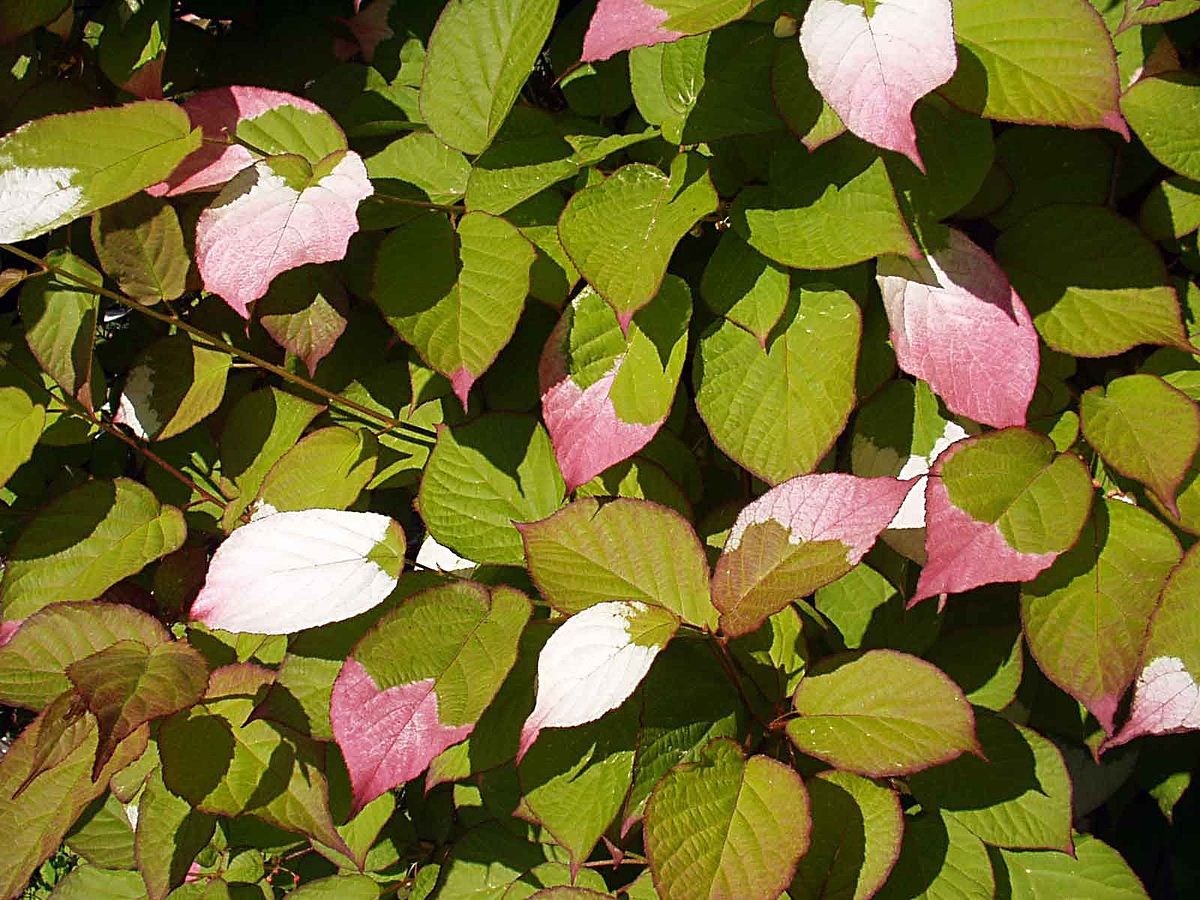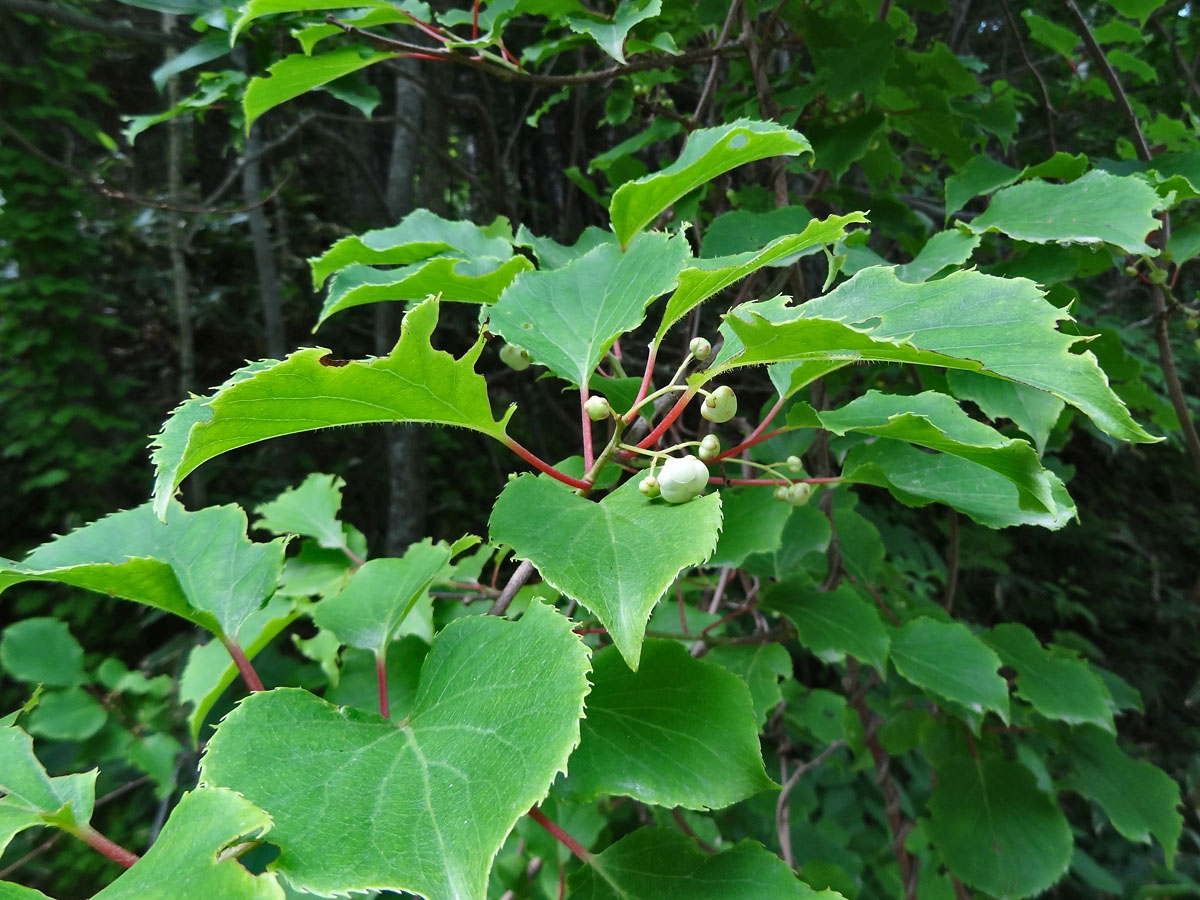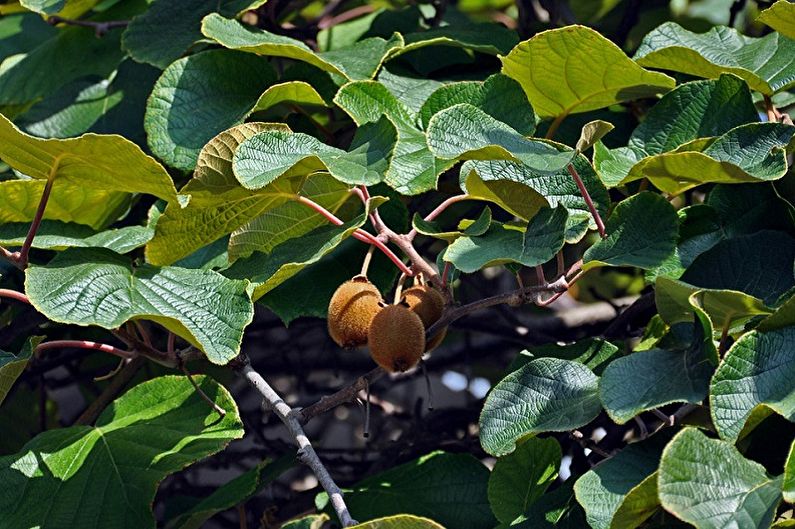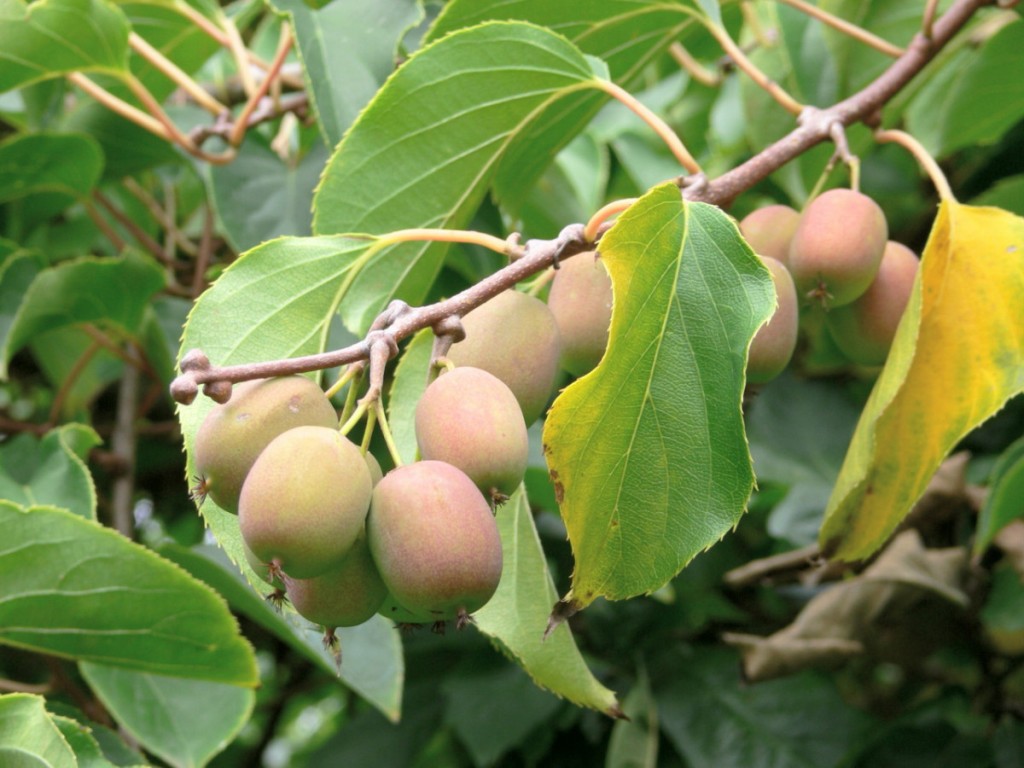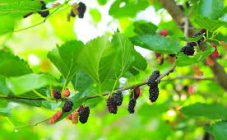Content:
Actinidia is a perennial representative of deciduous vines. Her homeland is the subtropical zones of Asia and the East. However, plant species have now been bred, for the cultivation of which the middle zone of the European part of Russia is ideal. Gardeners have noticed that actinidia in landscape design looks very harmonious. According to reviews, this plant makes the garden exotic. In addition, it is cultivated as a berry bush. Vine fruit is very healthy and tasty.
Description and characteristics of the culture
The plant is a woody vine. It densely braids any support, very beautifully decorating the landscape of the site. It can be used as a green fence, decoration for arches, house walls, any designs.
The leaves are elongated, juicy. Slightly heart-shaped. There are varieties in which the leaves have neat, even edges, and there are varieties with jagged leaves. Actinidia leaves have a unique property. During the season, they change color several times. At first they are light copper, then emerald, whitish, pink. In autumn, the tips of the leaves turn purple.
In the spring (in May, June), the actinidia blooms. At this time, the site is filled with an indescribable fruity and floral aroma. The color of the flowers is white or slightly purple.
The trunk is strong, can reach a diameter of 2-5 cm, bending. The height of the shrub is from 15 to 30 meters. Liana constantly wraps around the support and stretches to the sky.
The fruits ripen at the end of August. They are slightly larger than grapes. They are elongated oval berries. Very tasty, aromatic, sweet with a piquant sourness. They contain a lot of ascorbic acid. The chanting is not amicable. Ripe berries fall off. The yield is decent - from an adult bush, depending on the variety, from 4 to 11 kg of juicy berries are harvested. Delicious homemade jams, juices, and wine are prepared from the fruits.
Some gardeners are tormented by the question: "why does not actinidia bear fruit?" To answer it, you need to understand that actinidia is a dioecious plant. There are female and male vines. In order for this culture to bear fruit, it is better to grow several varieties on the site. Male and female specimens differ in flowers. Male flowers have many stamens, but no pistil. In women, there is a pistil, it is surrounded by stamens.
A culture has several species, which, in turn, have varieties. The middle zone of Russia is suitable for growing such types of actinidia as:
- Kolomikta;
- Arguta;
- Polygamum;
- Large-fruited.
All of them easily endure winter frosts and give good yields, even if the summer is cool and rainy.
The answer to the question "when does actinidia begin to bear fruit?" - 2-3 years after planting. However, the crop gives the maximum yield only after 6-8 years.
Preparing for landing, choosing a seat
First you need to choose the best place for the plant to grow. An important condition is moist, loose open ground. The acidity should be weak or neutral. It is best to plant the vine in fertile soil, where there is enough clay and sand. Culture loves the sun. Partial shade is also suitable for her. Another condition is the presence of support. Actinidia cannot grow normally without it. You can install a trellis, an arch, a regular post next to it. Another option is to plant the culture right at home. In this case, she will be able to catch on the wall.
The right choice of seedling gives a lot. It is better to buy a small plant in a specialized store, nursery. The seedling must be healthy. Its roots are closed. A suitable age is one to two years.
Growing actinidia begins with preparation for planting. A pit is prepared a few weeks before the scheduled planting day. If several plants are planted, then several pits are prepared. The distance between them must be at least 2 meters. The hole needs to be dug quite deep - more than half a meter. The width is exactly the same. A drainage layer is built at the bottom. Pebbles, brick fragments will do. A soil mixture of humus, peat, garden soil, ash, ammonium nitrate is placed on the drainage, it is allowed to add superphosphate.
On the day of planting, the seedling is examined. Remove all dry twigs, straighten the roots, remove broken or dried ones. After the root system is dipped in a clay mash, its consistency should be like thin sour cream.
Correct fit diagram
The correct landing scheme consists of the following stages:
- As soon as the clay talker on the roots has dried up, the rhizome is placed in the planting pit;
- The grower should place the roots on a mound made of ordinary soil. Each spine should surround a free space;
- It is necessary to ensure that the root collar does not go deep, but is at ground level;
- Gradually the pit is filled with earth. It is slightly tamped;
- You need 2-3 buckets of water for watering the seedling;
- Planting ends with soil mulching. You can take peat, hay, grass.
Actinidia care
How to grow actinidia in the country? This can be done if the planting and care rules are followed. At the same time, the cultivation and care of actinidia does not cause special difficulties for gardeners. Even a novice summer resident can cope with this.
Cultivation of a crop involves sparse watering, but frequent irrigation of the leaves. Water from a sprayer can be sprayed on crops early in the morning and in the evening. Water the ground under the bush every few weeks. If the summer is not dry, then you can refuse watering.
Top dressing is carried out in April. First, the earth is loosened. This is done carefully, since the roots are shallow from the ground. Further, complex fertilizers containing phosphorus and potassium are placed. Fly ash is added. Mulch is laid out. Hay, sawdust, spruce needles are suitable.
For the winter, the plant is removed from the support, laid on the ground. If the liana is not 3 years old, it is covered with peat, spunbond.
Trimming scheme
The first sanitary image of the culture is carried out 3-4 years after planting. Rejuvenating pruning, when only a small stump is left, after 9-10 years.
Sanitary pruning of leaves is carried out in early spring, before bud break, or in autumn, before hibernation.
The pruning scheme is to remove old shoots that do not bear fruit, dry branches, overgrown branches.
In addition, you need to pay attention to what kind of Actinidia grows in the garden. Each species has its own characteristics and pruning schemes.
It is generally not recommended to cut the stems of the Argut species. But the branches can be safely removed.
Reproduction
An exotic plant can be propagated and grown in several ways. Among them:
- Seeds;
- Arc layering;
- By cuttings with green shoots;
- Lignified cuttings.
Seeds
How to grow actinidia from seeds? Planting actinidia seeds is troublesome. Seed material should be pre-prepared for planting for almost 5 months. First, the grains are washed, dried, placed in water for 3-5 days. After they are soaked, they are put into wet sand. Sand with seeds is watered every 7-10 days. The container must be in the apartment. After 60 days, it is taken underground, where it is cool. There, the seed material in the sand will stay for another 60 days. Then they bring him home for 20 days. Then the seeds are planted in containers with soil mixture. Transplantation to a permanent place in open ground is carried out after 3-4 strong leaves appear on the sprout.
Arc layering
This method is suitable for early spring. The lower branches with buds are taken from actinidia. They are not cut off, but simply bent to the ground in several places. In these places, pits are made where peat and humus are placed. Parts of the branches are fixed in these pits, sprinkled with earth. It is important that the tip of the branch, which is taken for growing cuttings, is not covered with earth. Pits with bent branches are constantly shedding. A layering transplant is possible in a year.
Cutting green shoots
It is necessary to cut green cuttings that have at least three buds. The upper part is cut straight, the lower one forms an acute angle. Cuttings are planted in a greenhouse in fertilized soil with sand. They need to be watered every day. The procedure is performed in early summer after flowering. A transfer to a permanent place is also possible after a year.
Lignified cuttings
The procedure for cutting cuttings is carried out in the fall. Next, the sticks are stuck into a container with sand. The container is removed to the cellar until spring. In the spring months, cuttings are planted in a greenhouse or greenhouse. There they will grow for about a year.
Diseases and pests of actinidia
This plant has strong immunity. If you plant a vine in fertile soil, take care of it correctly, then pests and diseases will not affect it.
However, even such a strong plant can sometimes get sick with powdery mildew, fruit rot. To cope with ailments, you should remove infected shoots and leaves in time. You can treat the culture with household soda. A solution is being prepared. It is necessary to dilute 100 grams of soda in 2 buckets of water. Liana is sprayed with water and soda. The procedure is carried out every 10 days.
Disease and pest prevention is simple. In spring and autumn, the plant is washed with a common remedy - Bordeaux liquid. They also water the ground under the bush.
Actinidia: the secrets of growing
Creating conditions for fruiting and increasing the yield of actinidia is the main thing in growing this beautiful liana.
In order to grow a healthy plant that yields a good harvest every year, 9 conditions must be observed:
- The seedling should be intact, with a closed root system. It should be bought only in proven nurseries;
- The place for actinidia is selected sunny or with partial shade;
- The soil should be fertile, neutral or slightly acidic;
- The planting pit is prepared 2 weeks before planting. It must have a drainage layer;
- A plant cannot develop without support. The main purpose of the vine is to grow up and twist objects;
- Watering can rarely, but be sure to irrigate the leaves of actinidia from a spray bottle;
- Sanitary pruning is done in the spring or fall. But you need to start it only after the plant has reached the age of 3-4 years;
- The plant can be fed with complex fertilizers. This will increase yields;
- In the spring and autumn, one should deal with the prevention of diseases and pests.
If you grow and care for actinidia correctly, then the plant will give a bountiful harvest of juicy fruits every year for 40-60 years, and decorate the summer cottage with its appearance.
